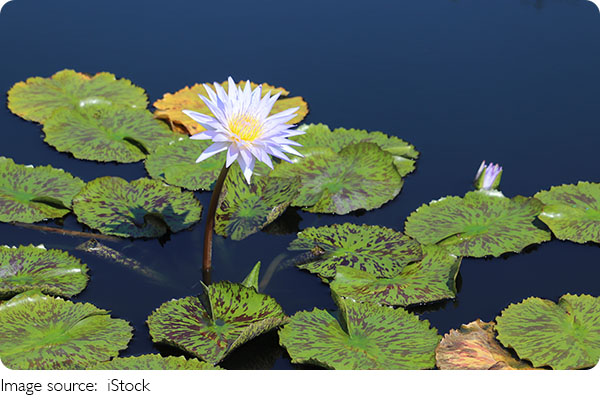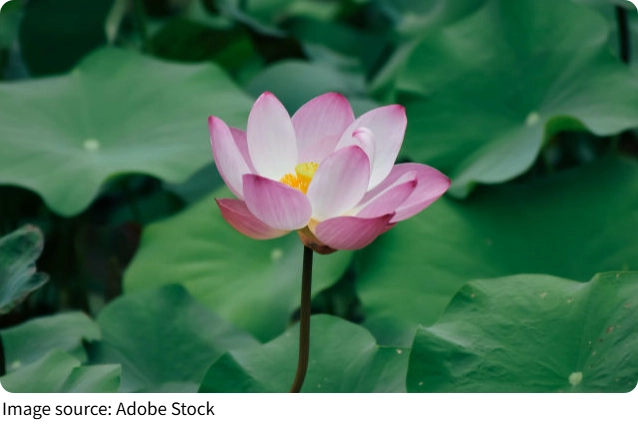Sleeping Water Lily

Have you ever wondered why water lilies close their flowers at night and open them again in the morning? They're often called the "sleeping beauties" of the flower world because of this fascinating daily routine.
But do these plants actually sleep like we do? Do they get tired and need rest? While water lilies certainly follow a predictable cycle, it's not because they experience fatigue or sleepiness.
Plants, unlike animals, don't have nervous systems or the ability to feel tired, so they don't sleep in the same way we do. However, plants, like us, do follow a natural rhythm, known as the circadian rhythm, which is influenced by environmental factors like light, temperature, and humidity. Just like we wake up with the sun, plants also adjust their behavior based on the changes in their surroundings.
The Sun and the Plant's Response
In the morning, as the sun rises, plants like the water lily open their flowers to catch the sunlight. This allows them to begin the process of photosynthesis, which is essential for their growth and survival. The leaves also open up to absorb carbon dioxide, a key ingredient for photosynthesis. In the heat of midday, when the sun is at its strongest, water lilies and many other plants partially close their flowers and leaves to reduce water loss and protect themselves from the intense heat.
As the sun begins to set in the evening, the leaves of the water lily start to droop and the flower closes. This behavior helps prevent unnecessary water loss during the night when there is no sunlight to fuel the plant's processes. You can even observe this closing motion in other plants, like mimosa or sensitive plants, which fold their leaves when disturbed. This is believed to be a defense mechanism to protect against predators or harmful environmental conditions.

Why Do Flowers Open and Close?
The opening and closing of flowers is a complex process that can vary depending on the plant's environment. Tropical plants, like the water lily, have developed this behavior as a way to protect their delicate flowers from the harsh midday sun. By closing their flowers during the hottest part of the day, they avoid being burned by the intense heat. In colder regions, however, plants may close their flowers at night to conserve heat and protect themselves from frost.
But the opening and closing of flowers also serves a critical purpose: reproduction. Flowers attract pollinators, such as bees, butterflies, and birds, and different pollinators are active at different times of the day or night. For example, bees and butterflies are daytime creatures, while moths and certain species of bats are active at night. By adjusting their blooming times, plants can attract the right pollinators for their specific needs.
The Water Lily's Unique Flowering Schedule
Water lilies are found in a variety of environments around the world, from tropical to temperate regions. This wide distribution means that different varieties of water lilies have developed different blooming schedules to suit their specific environments. In the London Botanical Garden, for example, there are water lilies that open in the morning and close in the evening (such as the 'Thomas'), others that open in the morning and close at noon ('Fresh Pink'), some that open at noon and close in the evening ('Haifula'), and even a variety that opens in the evening and closes early in the morning ('Soft Leaf Red Water Lily').
Each of these varieties has adapted to its environment to maximize its chances of survival and reproduction. The timing of their flower openings is a strategic way to ensure that they attract the right pollinators at the right time.
Trapping Insects for Pollination
Interestingly, some water lilies also use their flower-closing behavior to their advantage when it comes to pollination. When an insect enters a water lily's flower, it may get trapped inside as the petals close. The insect, covered in pollen, stays trapped until the flower opens again the next day, at which point the flower releases the insect, now dusted with pollen, ready to pollinate other flowers.
This fascinating tactic helps the water lily ensure that its pollen is spread to other flowers, increasing its chances of successful reproduction. It's a clever strategy that maximizes the chances of pollination, all while keeping the insect inside for the night.

What Can We Learn from the Water Lily?
So, why does the water lily “sleep”? While it doesn't actually sleep in the same way we do, its flower-opening and closing cycle is essential for its survival and reproduction. The water lily teaches us the importance of adapting to our environment and timing our actions for maximum efficiency.
Just like the water lily, we can learn to adjust our rhythms and actions based on our surroundings. Whether it's managing our energy throughout the day or making sure we're in sync with the needs of others, the water lily's habits remind us of the importance of balance and adaptation.
So, Lykkers, next time you see a water lily bloom, take a moment to appreciate its rhythm and strategy. It's not just a beautiful flower – it's a master of timing and survival!
-
 Avoid In Thermos: What?Think your thermos can handle anything? Think again! Find out what you should NEVER put inside!
Avoid In Thermos: What?Think your thermos can handle anything? Think again! Find out what you should NEVER put inside! -
 Family EducationStruggling to Discipline Your Child? Here’s How to Find the Perfect Balance Between Reward and Punishment!
Family EducationStruggling to Discipline Your Child? Here’s How to Find the Perfect Balance Between Reward and Punishment! -
 Picnic Perfection7 Essential Tips for the Perfect Outdoor Picnic - How to Enjoy Nature, Stay Safe, and Have Fun!
Picnic Perfection7 Essential Tips for the Perfect Outdoor Picnic - How to Enjoy Nature, Stay Safe, and Have Fun!